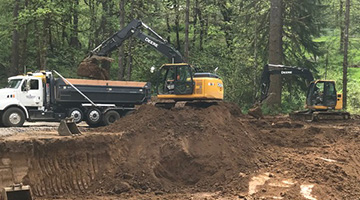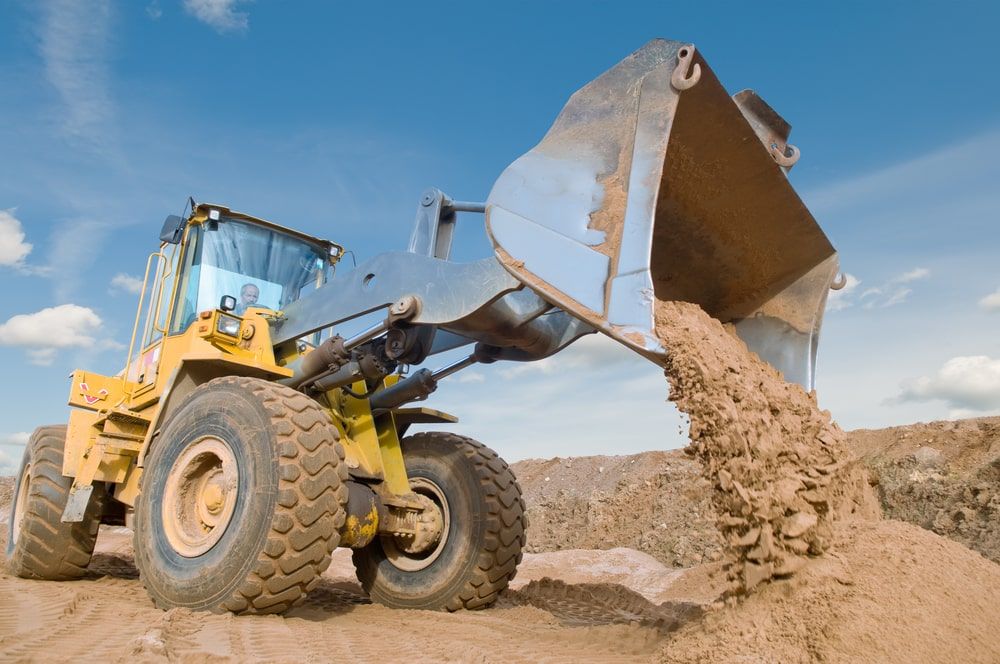Lancaster Trenching - Expert Trenching Solutions in Lancaster, Ohio
Lancaster Trenching - Expert Trenching Solutions in Lancaster, Ohio
Blog Article
Revealing the Art of Excavation: Pro Tips for Safe and Efficient Digging
In the realm of excavation, the mastery of safe and productive excavating is an art type that requires adherence, expertise, and accuracy to well established techniques. As dirt is transformed and earth is moved, the intricacies of excavation expose themselves, demanding a keen understanding of tools, soil composition, security procedures, and environmental factors to consider. The competence needed to browse these aspects successfully can indicate the difference in between a successful excavation task and a prospective calamity. By unwinding the layers of this elaborate procedure, a world of approaches and understandings awaits those looking for to elevate their excavation abilities to new heights.
Significance of Correct Equipment
To guarantee the safety and security and performance of any kind of excavation project, utilizing the ideal equipment is critical. Excavation jobs vary in range and complexity, ranging from small residential landscaping work to large building endeavors.
These functional equipments come in different sizes to fit different task demands. Small excavators are optimal for smaller sized jobs, while larger excavators tackle extra substantial projects efficiently.
Bulldozers succeed in tasks that call for pushing huge quantities of dirt or particles. By investing in the proper tools, excavation jobs can be completed securely, on time, and with precision.
Comprehending Dirt Structure
A comprehensive understanding of soil make-up is fundamental for performing excavation tasks with precision and security. Recognizing the various types of dirt is vital as it straight impacts excavation methods, devices choice, and general project efficiency. Soil structure typically consists of four major components: sand, silt, clay, and organic issue. Each part has one-of-a-kind residential or commercial properties that affect how soil reacts to excavation processes.
Silt fragments are smaller sized than sand however larger than clay, offering moderate drainage and communication. Organic issue, such as decaying plant product, influences soil fertility and stability.
Prior to beginning excavation, carrying out soil tests to determine its make-up and attributes is necessary. This info helps in choosing the appropriate equipment, implementing safety and security procedures, and creating excavation techniques tailored to the certain dirt conditions - lancaster trenching. By comprehending soil make-up, excavation experts can enhance job outcomes while making certain safety and security and adherence to best techniques
Precaution and Procedures
Comprehending dirt structure is the cornerstone whereupon precaution and methods for excavation projects are developed, ensuring the well-being of workers and the success of the endeavor. There are several key procedures that must be implemented to mitigate risks and stop accidents. when it comes to safety during excavation.
Firstly, before any excavating commences, a comprehensive assessment of the website ought hop over to these guys to be carried out to determine any kind of possible dangers such as underground utilities, unstable soil conditions, or close-by structures that can posture a risk. It is crucial to have a proficient person manage the excavation process to make sure that all security procedures are adhered to purely.
Moreover, all employees involved in the excavation must be appropriately trained in risk-free digging practices and the appropriate operation of equipment. By adhering to these safety and security actions and methods, excavation jobs can be finished effectively and without event.
Effective Excavation Planning
When getting started on an excavation job, meticulous preparation is vital to ensure effectiveness, safety, and successful results. Effective excavation planning entails a number of vital steps that are critical for the smooth implementation of the task.
When the website assessment is full, the following step is to develop a clear timeline and schedule for the excavation tasks. This consists of identifying the sequence of tasks, tools requirements, and workforce appropriation. Appropriate organizing aids prevent hold-ups and ensures that the job remains on track.

Additionally, interaction among all employee is extremely important during the planning phase. Clear regulations, normal updates, and effective control are vital for an effective excavation job. By investing time and initiative in thorough planning, excavation groups can significantly enhance productivity, reduce risks, and achieve successful results.

Handling Environmental Considerations
With enhancing emphasis on ecological sustainability in building practices, taking care of environmental considerations has come to be an essential aspect of excavation jobs. Excavation tasks have the prospective to impact the surrounding environment with dirt disintegration, debris drainage, habitat disruption, and contamination of water resources. To minimize these threats, it is necessary to carry like it out best practices that prioritize environmental management.

In addition, correct waste monitoring is vital to avoid soil and water contamination. Applying procedures for the disposal of harmful materials, recycling of waste materials, and decreasing the use of unsafe chemicals can significantly lower the ecological effect of excavation jobs. By incorporating these methods into excavation planning and implementation, construction companies can ensure that their projects are not just risk-free and productive but also environmentally liable.
Verdict
To conclude, mastering the art of excavation needs a comprehensive understanding of appropriate devices, soil structure, security procedures, and effective preparation. By adhering to these standards and thinking about environmental elements, excavations can be performed safely and successfully. It is essential to prioritize security why not try this out and performance in every digging task to ensure effective results.
As dirt is transformed and planet is moved, the details of excavation expose themselves, requiring an eager understanding of devices, soil make-up, security methods, and ecological considerations.To make sure the safety and performance of any excavation job, using the appropriate devices is paramount.A detailed understanding of dirt composition is essential for executing excavation jobs with accuracy and safety and security. Comprehending the different types of dirt is vital as it straight impacts excavation methods, tools choice, and overall project effectiveness. By understanding soil structure, excavation specialists can improve job end results while ensuring security and adherence to best practices.
Report this page